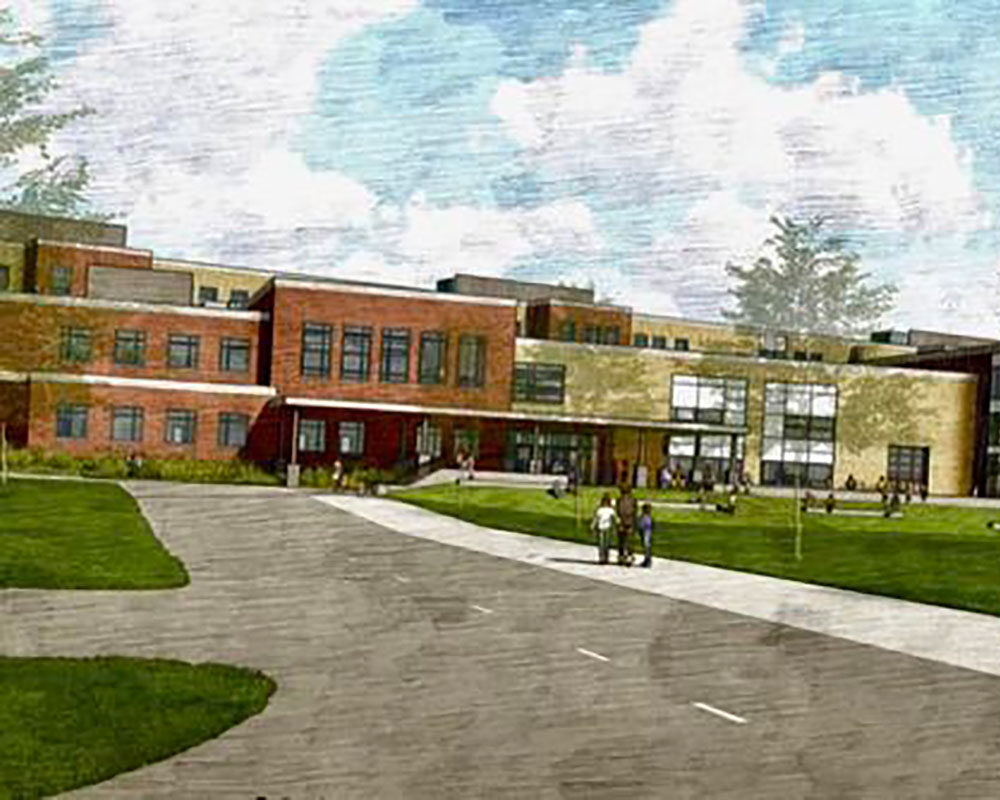A new Dr. Albert B. Consentino School moved a major step toward becoming reality Tuesday night as the Haverhill City Council voted unanimously to appropriate about $160 million to pay for its construction.
The Council also voted 9-0 to allow Mayor James J. Fiorentini to submit a second document, known as the Project Scope and Budget Agreement, to the Massachusetts School Building Authority. This document assures the state agency the city has approved the project and agreed to pay for it. Speaking before the Council, the mayor said the project will alleviate a number of problems facing Haverhill schools.
“The first thing the new school will address is overcrowding. The existing Consentino was built for 710 students. The proposed new school will be for 1,080 students. The new school will be a state-of-the-art facility that will allow for the most modern and up-to-date technology,” he said.
School Superintendent Margaret Marotta agreed, noting the science labs at the current school are so outdated they are no longer even used for that purpose.
Michelle Rogers of Dore and Whittier, the architectural firm developing the project’s design, said the new school will be set up like a campus with a student courtyard and a four-story academic wing divided by grade levels. Additionally, she said there is a great deal of flexible space in the new school’s design including the cafeteria, gymnasium, an area for music and art performance and a media and technology space.
“These spaces are shared spaces. All the students will use all of these spaces but, in addition to that, they can be shared with the public while we are still locking down and protecting the academic space,” she explained.
While councilors were unanimously in favor of the project, how it should be financed remains a question.
Councilor John A. Michitson raised the issue of the planned new Whittier Regional Vocational Technical School, and Haverhill’s portion of financing its construction which could cost an additional $90 million as well as a new John Greenleaf Whittier School for middle grades. He cautioned this could be quite a hit to the city’s taxpayers.
Michitson noted next week’s agenda includes a request to ask voters if they would approve a so-called debt exclusion under the state’s tax-limiting law, Proposition 2 ½. Such a vote—similar to the one that paid for the new Caleb Dustin Hunking School across the river—might be a way to cover costs if necessary.
Council President Timothy J. Jordan noted such a request doesn’t mean the city would tax more, but offers an emergency option in light of all of the building projects coming down the line. Fiorentini said approval would likely lead to tax increases, but that he’d make his case next week.
Councilor Thomas J. Sullivan also raised the issue of the now-reduced portion of the project to be paid by the state. He said, because of inflation, the amount the state should be covering is significantly lower than it appears.
“I’m concerned about the 44% reimbursement level from the state. The state is not truly funding 78% anymore because of inflation and the cost of increase in construction. That’s a huge burden that they’ve put on the city once again,” he said
Sullivan said he intends to introduce a motion at next week’s meeting to write a letter to incoming Gov. Maura Healey as well as the state Treasurer Deborah B. Goldberg and legislators expressing the city’s dissatisfaction with the reduced reimbursement.
Councilors agreed to hold off further discussion of how best to finance the project until next Tuesday’s meeting.

